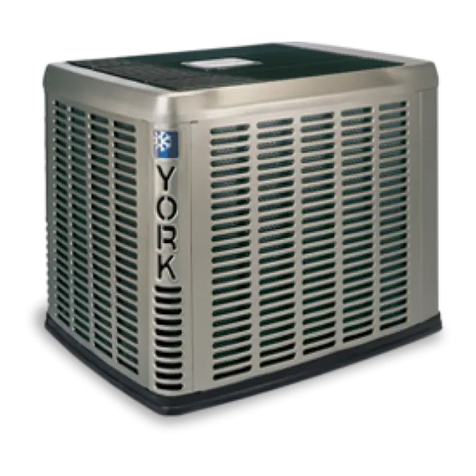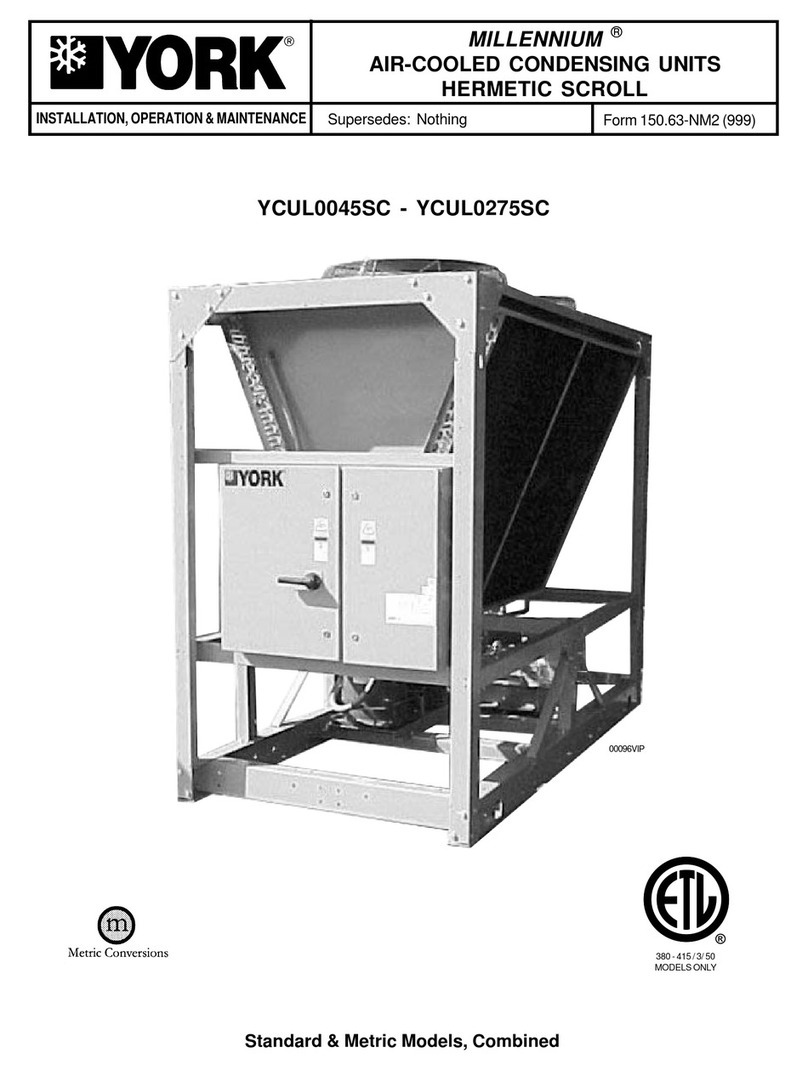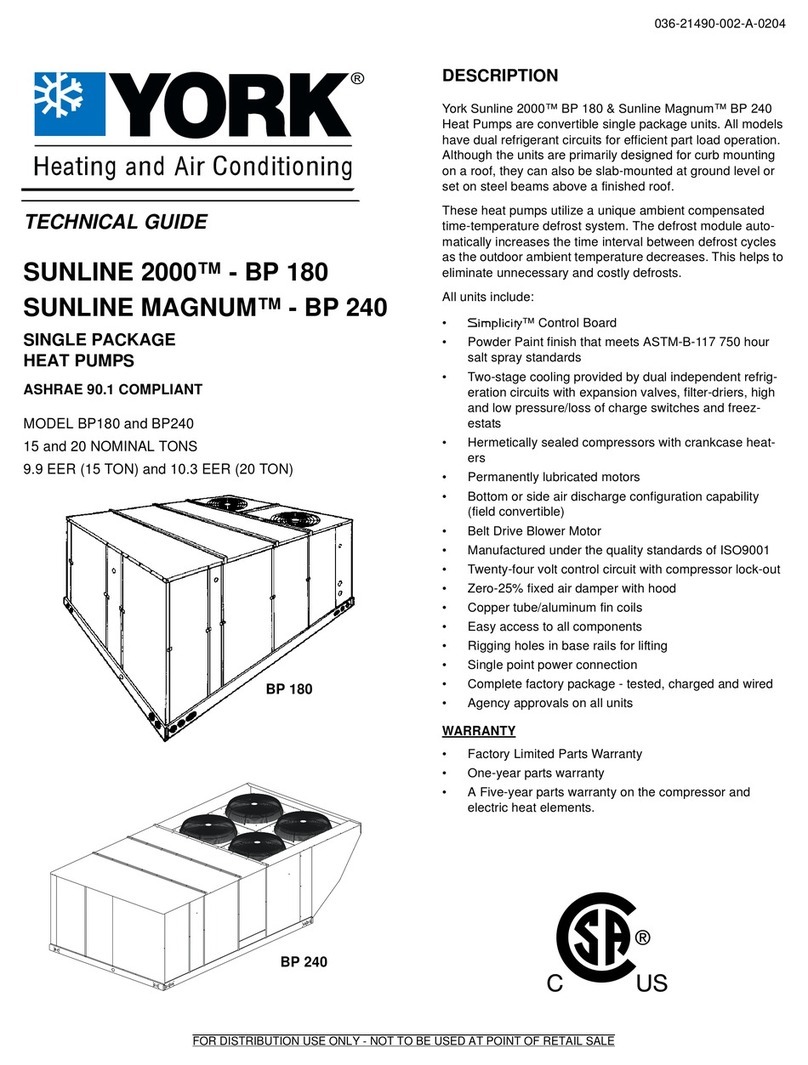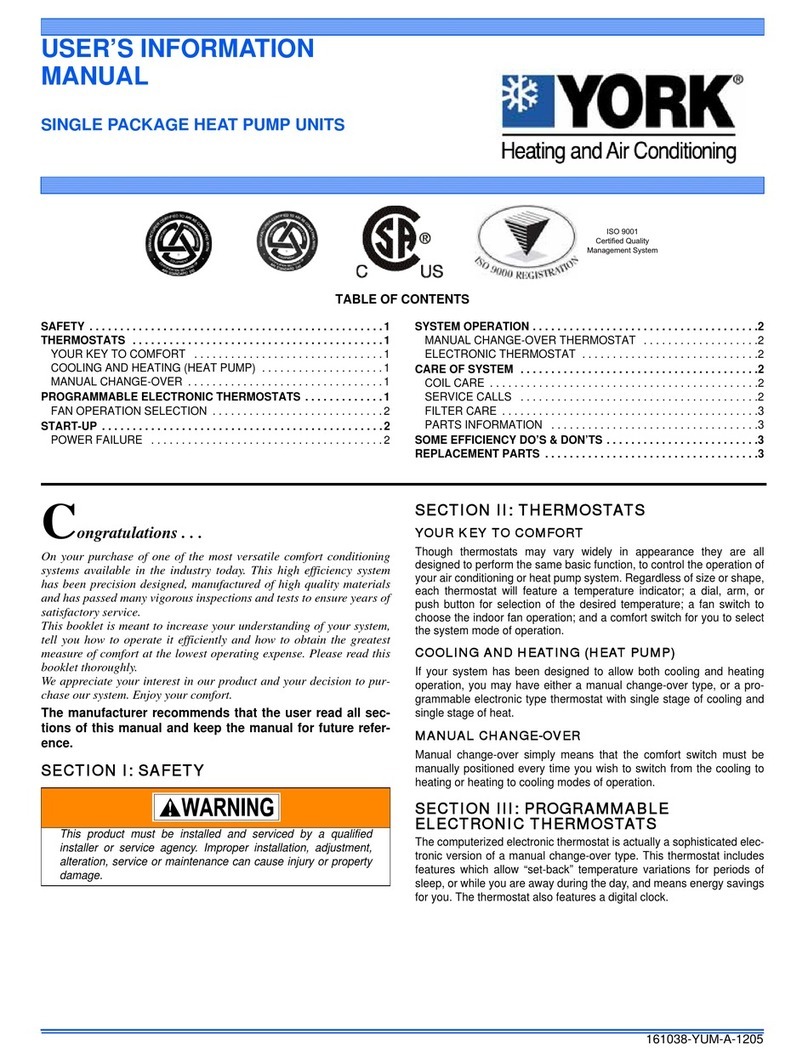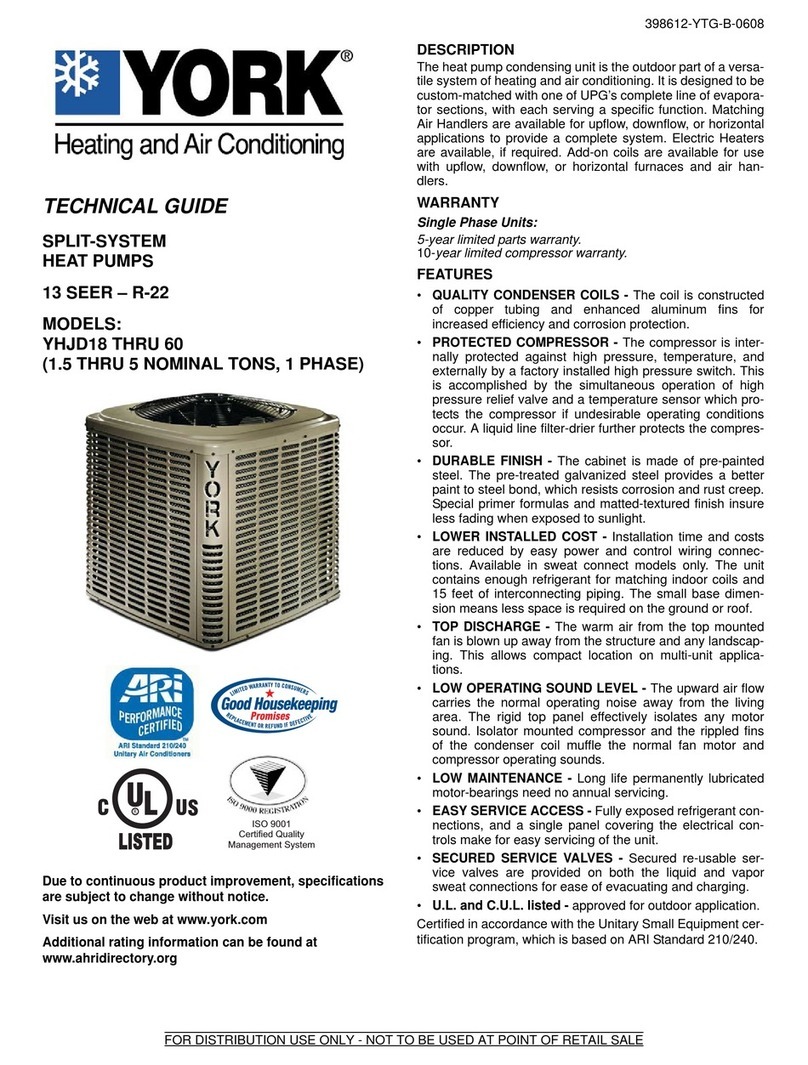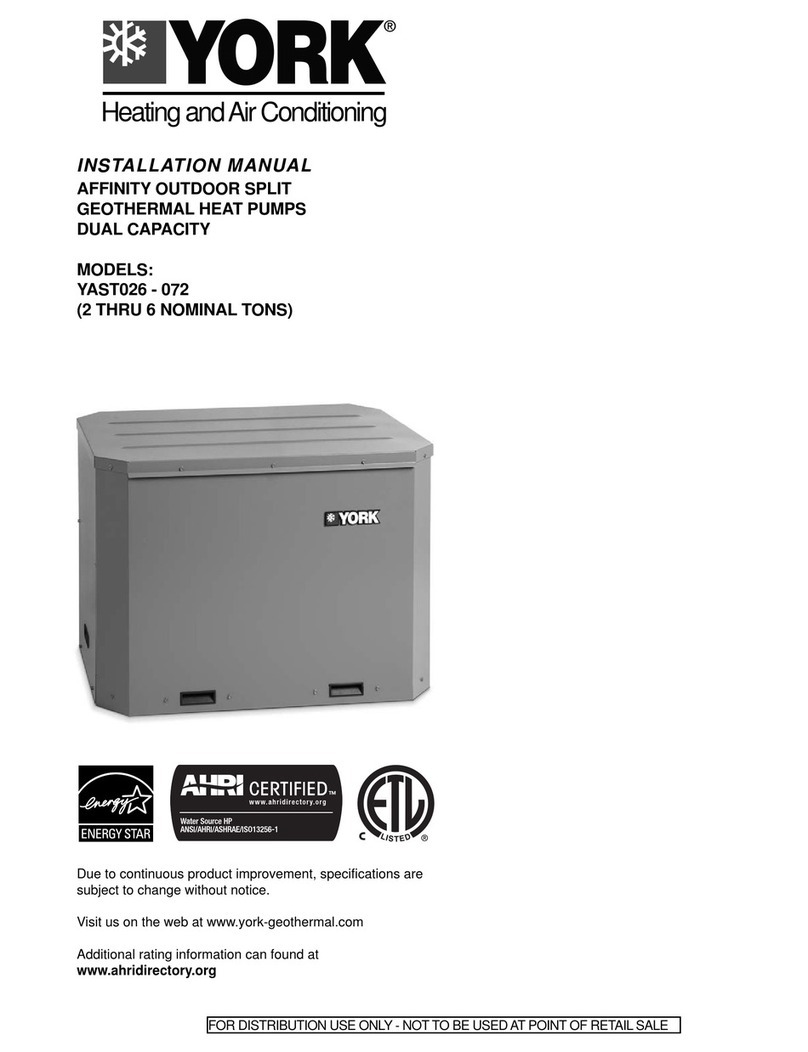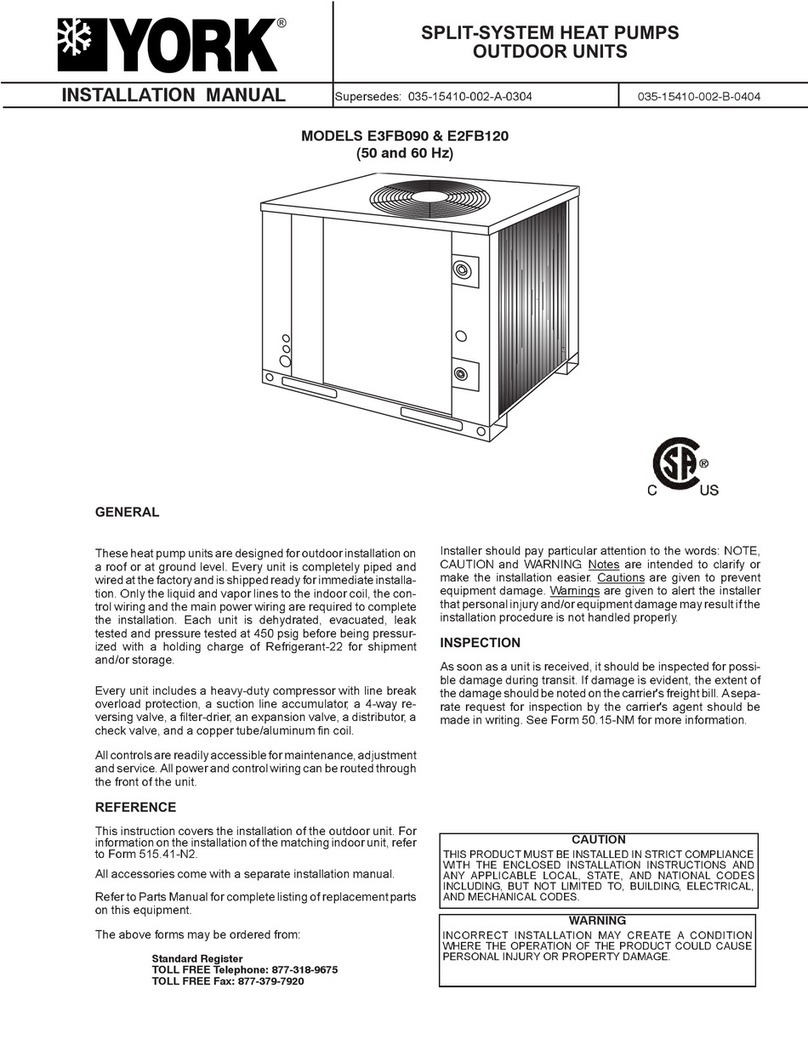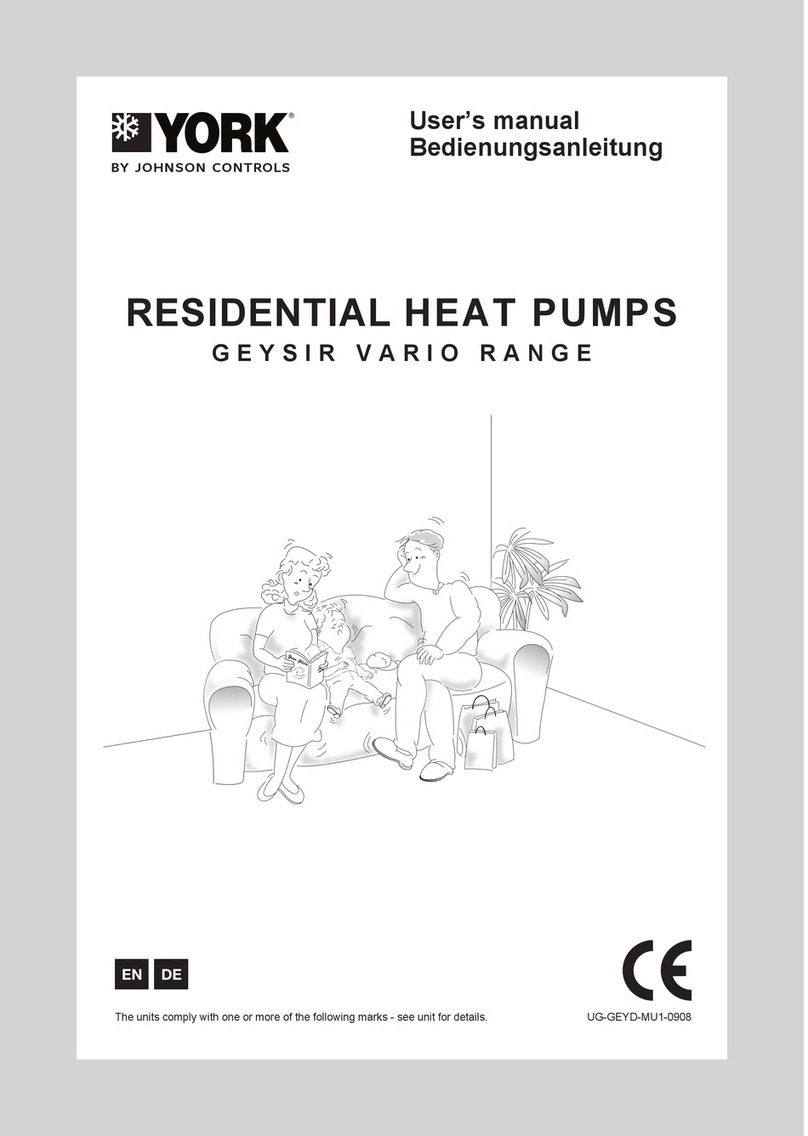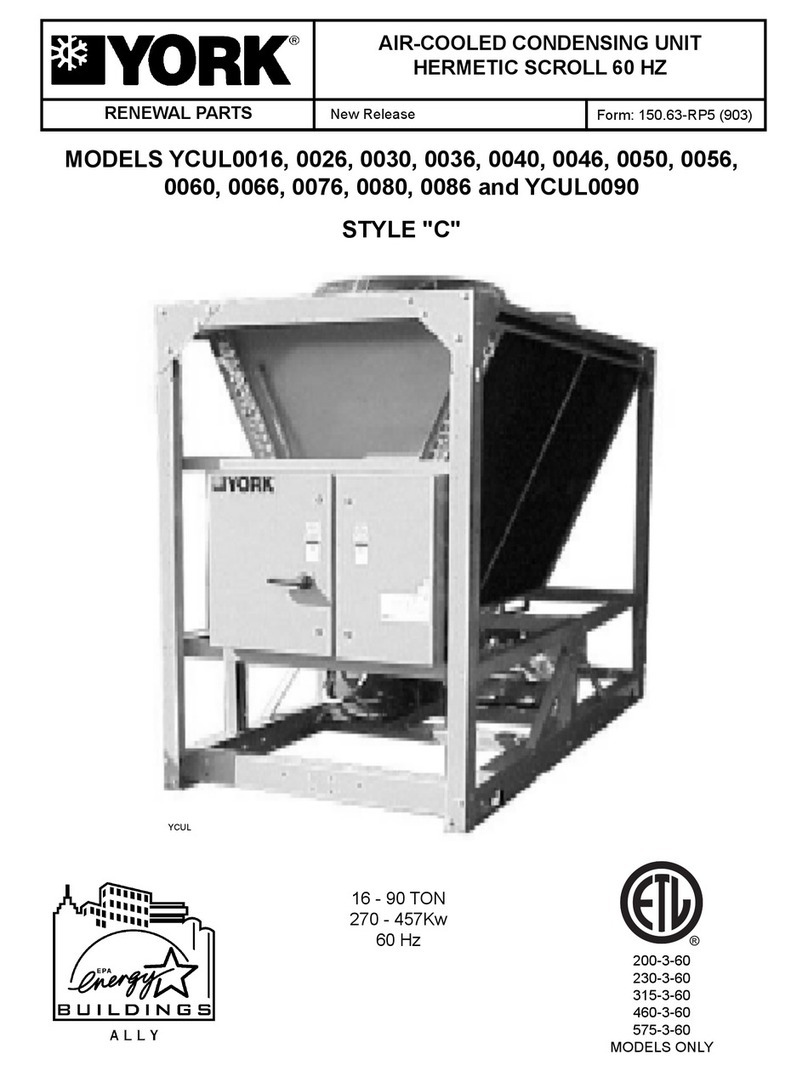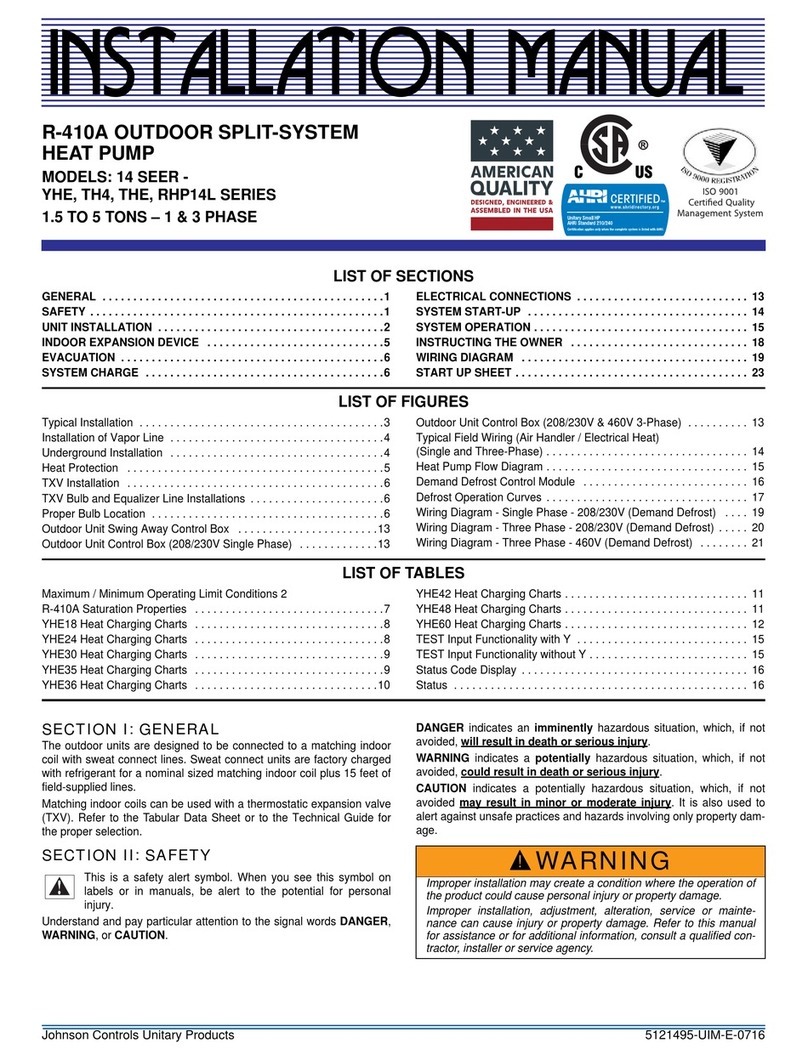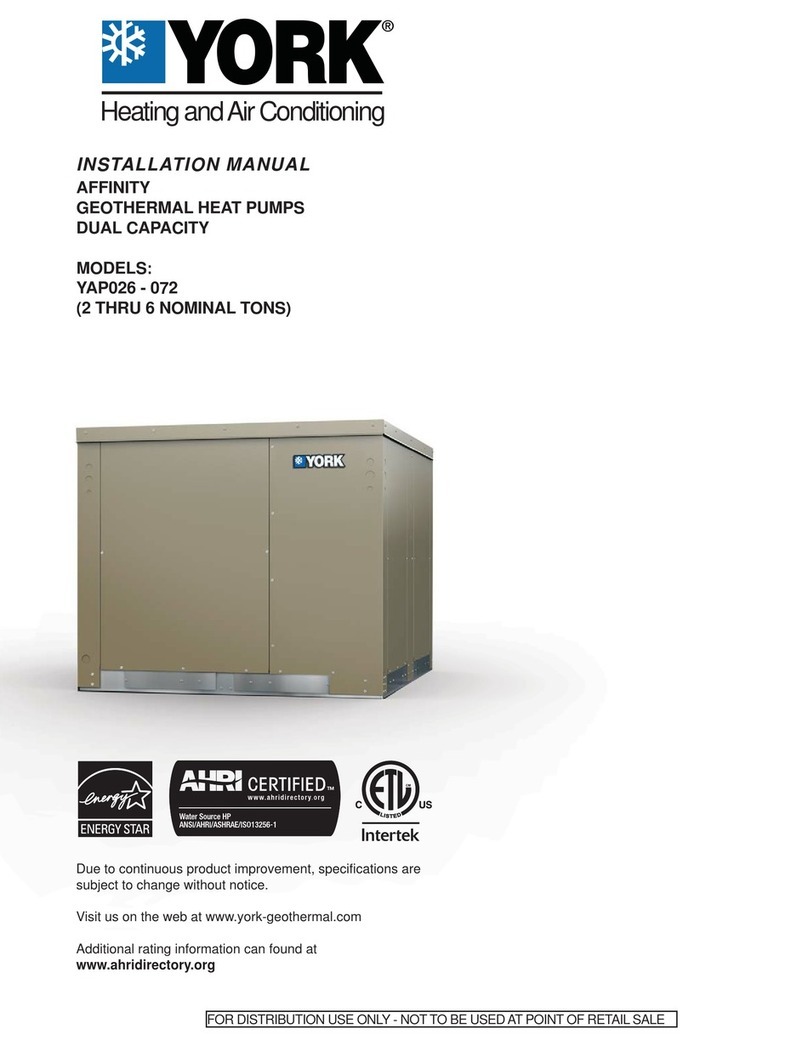
8JOHNSON CONTROLS
FORM 150.68-ICOM1
ISSUE DATE: 10/15/2020
RESPONSIBILITY FOR SAFETY
Every care has been taken in the design and manufacture
of the unit to ensure compliance with the safety
requirements listed above. However, the individual
operating or working on any machinery is primarily
responsible for:
• Personal safety, safety of other personnel, and the
machinery.
• Correct utilization of the machinery in accordance with
the procedures detailed in the manuals.
ABOUT THIS MANUAL
The following terms are used in this document to alert
the reader to areas of potential hazard.
A WARNING is given in this document to
identify a hazard, which could lead to
personal injury. Usually an instruction will
be given, together with a brief explanation
and the possible result of ignoring the
instruction.
A CAUTION identies a hazard which could
lead to damage to the machine, damage to
other equipment and/or environmental
pollution. Usually an instruction will be
given, together with a brief explanation and
the possible result of ignoring the
instruction.
A NOTE is used to highlight additional
information, which may be helpful to you
but where there are no special safety
implications.
The contents of this manual include suggested best
working practices and procedures. These are issued for
guidance only, and they do not take precedence over
the above stated individual responsibility and/or local
safety regulations.
This manual and any other document supplied with the
unit are the property of YORK which reserves all rights.
They may not be reproduced, in whole or in part, without
prior written authorization from an authorized YORK
representative.
MISUSE OF EQUIPMENT
Suitability for Application
The unit is intended for cooling water or glycol solutions
and is not suitable for purposes other than those specied
in these instructions. Any use of the equipment other
than its intended use, or operation of the equipment
contrary to the relevant procedures may result in injury
to the operator, or damage to the equipment.
The unit must not be operated outside the design
parameters specied in this manual.
Structural Support
Structural support of the unit must be provided as
indicated in these instructions. Failure to provide proper
support may result in injury to the operator, or damage
to the equipment and/or building.
Mechanical Strength
The unit is not designed to withstand loads or stresses
from adjacent equipment, pipework or structures.
Additional components must not be mounted on the unit.
Any such extraneous loads may cause structural failure
and may result in injury to the operator, or damage to
the equipment.
General Access
There are a number of areas and features, which may
be a hazard and potentially cause injury when working
on the unit unless suitable safety precautions are taken.
It is important to ensure access to the unit is restricted
to suitably qualied persons who are familiar with the
potential hazards and precautions necessary for safe
operation and maintenance of equipment containing
high temperatures, pressures and voltages.
Pressure Systems
The unit contains refrigerant vapor and liquid under
pressure, release of which can be a danger and cause
injury. The user should ensure that care is taken during
installation, operation and maintenance to avoid damage
to the pressure system. No attempt should be made
to gain access to the component parts of the pressure
system other than by suitably trained and qualied
personnel.
Electrical
The unit must be earthed. No installation or maintenance
work should be attempted on the electrical equipment
without rst switching power OFF, isolating and locking-
o the power supply. Servicing and maintenance on live
equipment must only be performed by suitably trained
and qualied personnel. No attempt should be made to
gain access to the Control Panel or electrical enclosures
during normal operation of the unit.
Rotating Parts
Fan guards must be tted at all times and not removed
unless the power supply has been isolated. If ductwork is
to be tted, requiring the wire fan guards to be removed,
alternative safety measures must be taken to protect
against the risk of injury from rotating fans.


